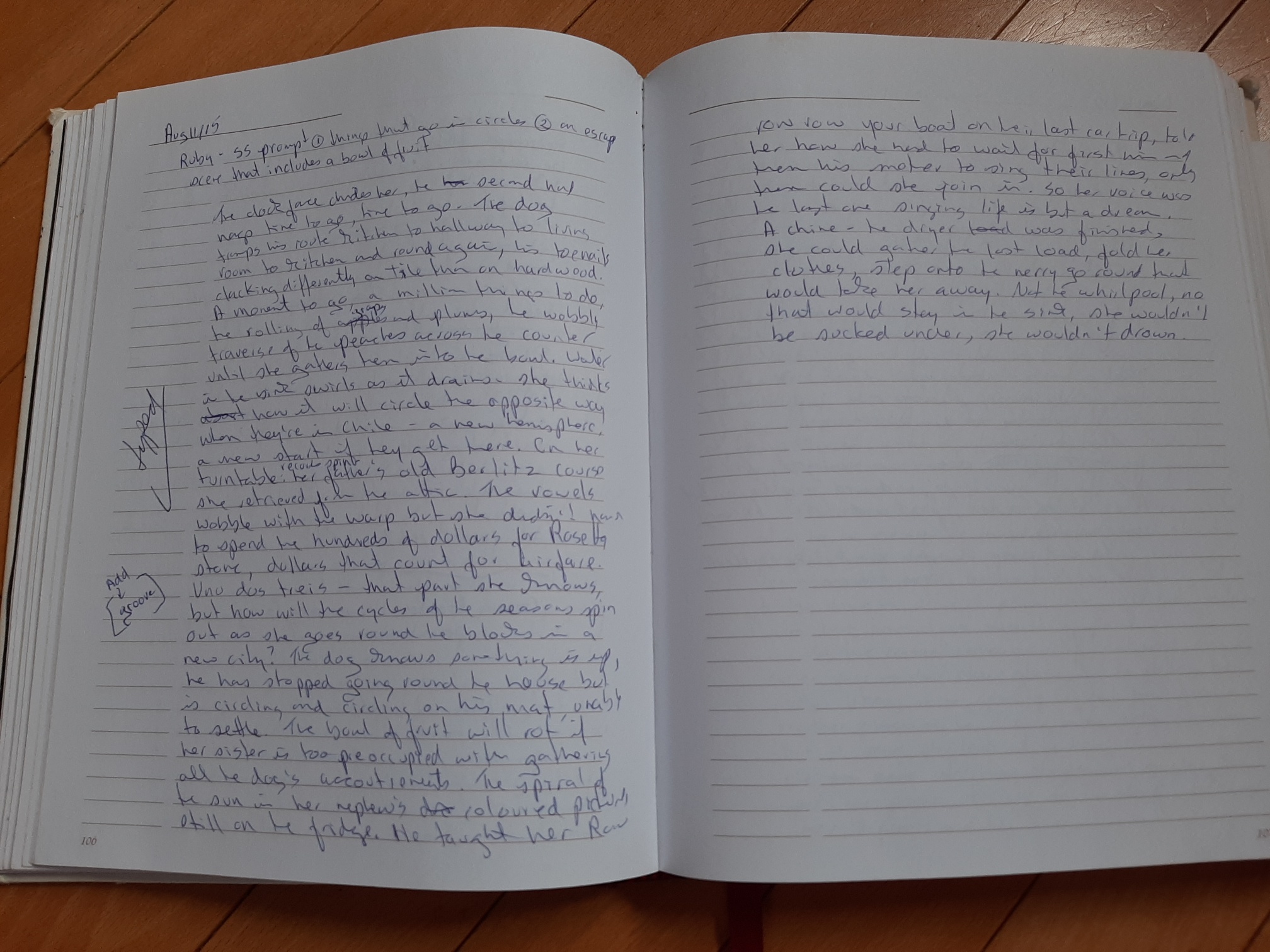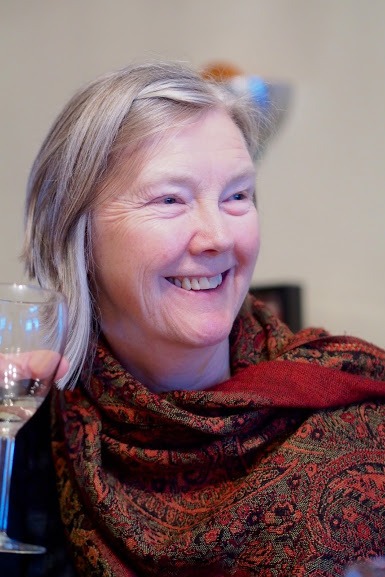Finding the Form with Frances Boyle
By Frances Boyle
The title of my poem “Rounds” gives a solid clue as to how this piece and its form came to be. It started with a two-pronged prompt: to write about “things that go in circles”, and “an escape scene that includes a bowl of fruit”.
So, what goes in circles? In addition to the requisite spilled fruit, I thought of the hands on a clock, my dog’s circling before settling himself on his mat. I began to freewrite, as is my usual process. Remembering how water in sinks and toilets circles counter clockwise in the Southern hemisphere led me to an “escape” to Chile. I speculated on what how someone might feel as they got ready to move countries, thoughts going in circles as they do (or at least as mine do) when overwhelmed with too many things to accomplish.

And who could be dealing with all these circles? The idea of rounds on hospital wards led me to a young doctor about to start a residency overseas: who she would be leaving behind, and what she would miss. I pulled in a sister, and a young nephew whose drawings featured a spiral sun. When I remembered the way voices braid in a children’s round like “Row row row your boat”, the circle felt nearly complete, and the spinning of merry go round and whirlpool closed the loop.
I am partial to narrative, and write fiction as well as poetry (and have been lucky enough to have had both published in The New Quarterly). The initial prompt came from Sarah Selecky via her writing school, which is focused on fiction, so her suggestions are often geared towards scene. I have notebooks full of freewriting around prompts like these and as usual the words I’d written lingered in one of them for several years.
When I finally revisited the section, it could have become the start of a new story, or I might have woven some of the text into an existing story draft (as I did with sections of my novella, Tower, and several of the stories in my short fiction collection, Seeking Shade). However, the circle motif suggested that this piece would be better as a narrative poem. The quintain stanza structure came to me fairly quickly and required trimming and shaping to make the line breaks work effectively. Next, I enhanced the internal rhyme and assonance/consonance and tried to sharpen images ad use more evocative words, revising the poem in layers or (perhaps more accurate) in spiral iterations.

Frances Boyle’s newest book, Openwork and Limestone, her third poetry collection, is forthcoming from Frontenac House in fall 2022. She is also the author of Tower, a novella, and Seeking Shade, a short story collection that was a finalist for the Danuta Gleed Award and the ReLit Award and a winner of the Miramichi Reader’s Very Best! Award for short fiction.
Photo by Mika Korhonen on Unsplash.

